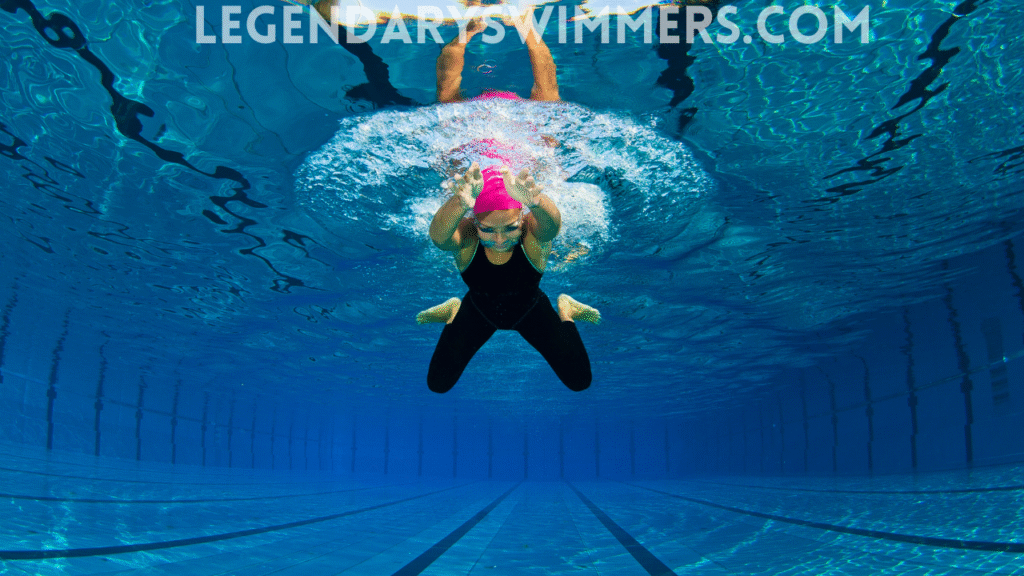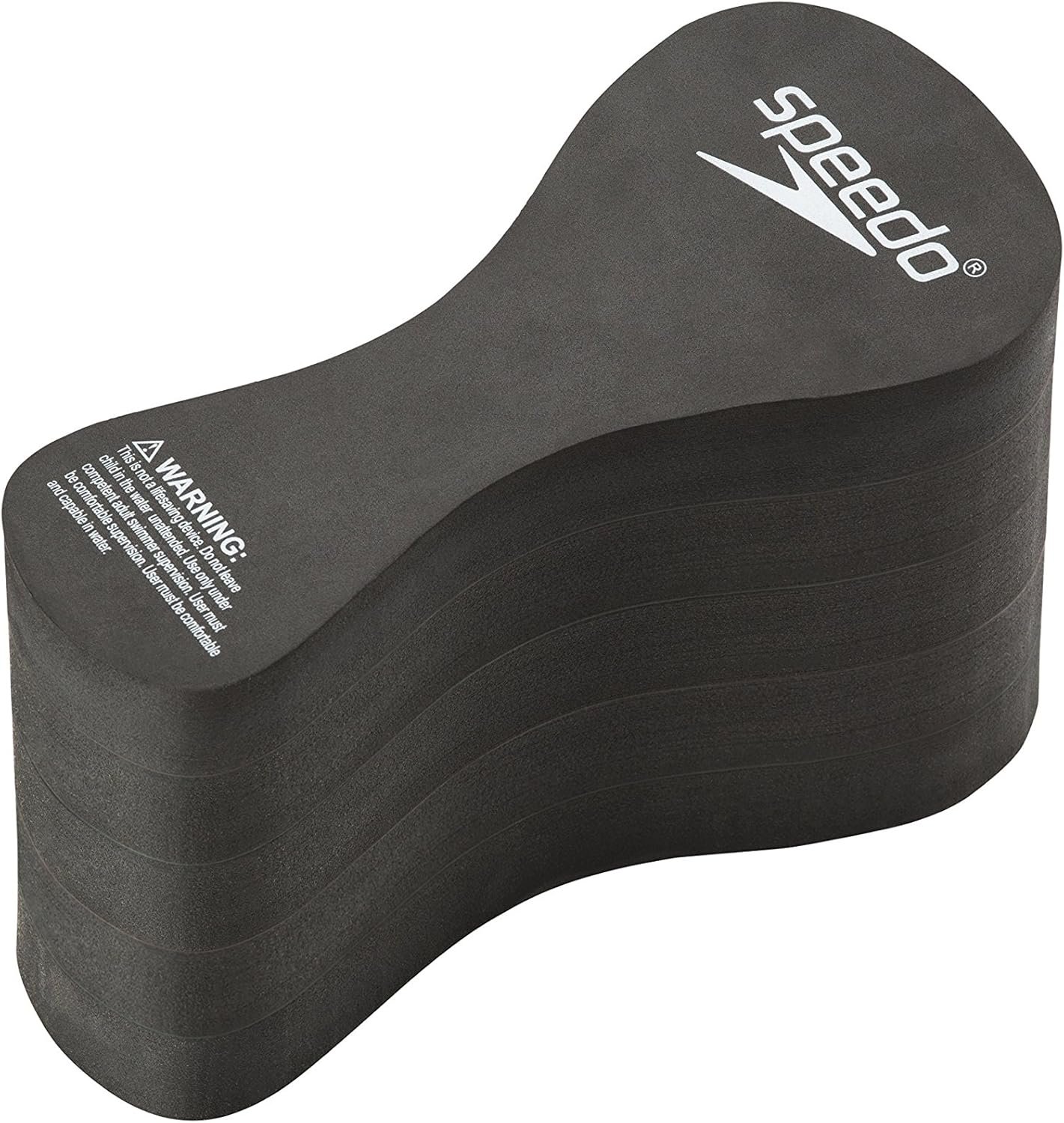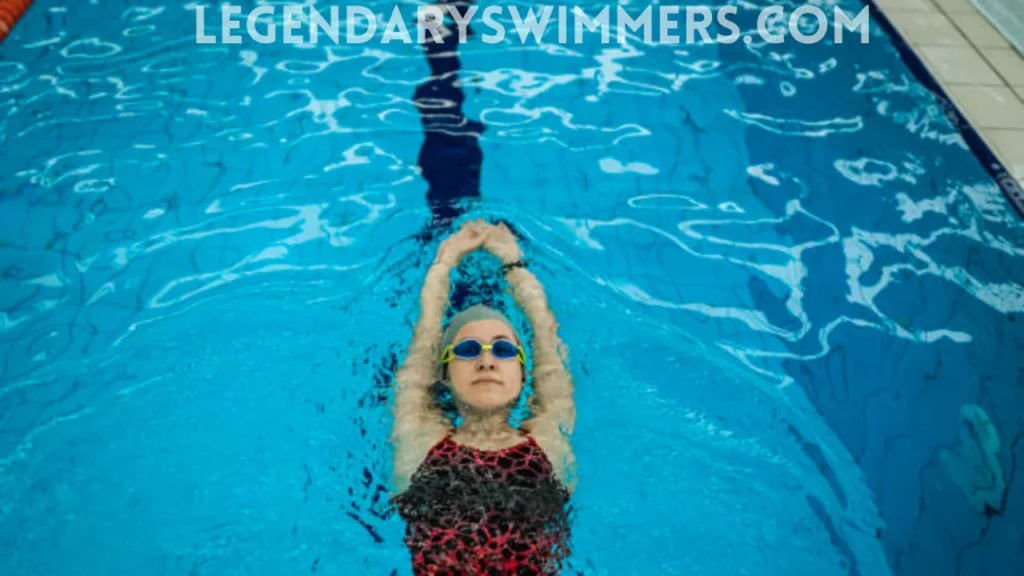
Improve Breaststroke Kick Technique: Tips, Drills & Workouts
- Updated:
The breaststroke kick, often called the “frog kick,” is the powerhouse behind one of swimming’s most technical strokes, generating 70–80% of your propulsion, as noted by experts. A stronger kick leads to a more powerful, efficient, and seamless breaststroke technique. Whether you’re a beginner learning the ropes or an advanced swimmer aiming to refine your technique, this guide offers actionable tips, drills, and a sample workout to perfect your breaststroke kick.
- Why the Breaststroke Kick Matters
- Breaststroke Kick Technique: Step-by-Step Breakdown
- Muscles Used in the Breaststroke Kick
- Common Breaststroke Kick Mistakes to Avoid
- 5 Drills to Perfect Your Breaststroke Kick
- Sample Breaststroke Kick Workout (30–40 Minutes)
- Dryland Exercises to Boost Breast Stroke Kick
- Timing Your Breaststroke Kick
- FAQs
- Conclusion
- Recommended Products
Why the Breaststroke Kick Matters
The breaststroke kick is unique among swimming strokes due to its outward and backward motion, relying heavily on the insides and bottoms of your feet for propulsion.
According to USMS, it’s the most critical component for speed in breaststroke, unlike freestyle or butterfly, where arm pull plays a larger role. A well-executed kick minimizes drag, maximizes force, and enhances stroke timing, making it essential for efficiency and speed.
Benefits of a Strong Breaststroke Kick:
-
Increased Propulsion: Drives you forward with minimal energy waste.
-
Improved Timing: Synchronizes with arm pull for smooth, rhythmic swimming.
-
Muscle Engagement: Targets quadriceps, glutes, hamstrings, adductors, and tibialis anterior for a full lower-body workout.
-
Injury Prevention: Proper technique reduces strain on knees and hips, addressing concerns like “breaststroker’s knee.”
Ready to boost your breaststroke? Let’s break down the technique, common mistakes, and drills to elevate your kick.
Breaststroke Kick Technique: Step-by-Step Breakdown
Think of it as four key phases: Up, Out, Around, and Together. Here’s how to execute each step for maximum efficiency.
-
Up (Recovery Phase):
-
Start in a streamlined position with legs extended and toes pointed.
-
Bend your knees, drawing your heels toward your hips using your hamstrings. Keep heels close to the outside of your hips, not the centerline of your butt, to avoid wide knees.
-
Tip: Hinge at the knees, not the hips, to minimize drag, as emphasized by USMS.
-
-
Out (Setup Phase):
-
Turn your toes outward, positioning the insides and bottoms of your feet to face backward. Your feet should be wider than your knees, roughly shoulder-width apart.
-
Keep knees stable to avoid excessive outward movement, which increases drag.
-
Tip: Be patient here—rushing this phase reduces the surface area for propulsion.
-
-
Around (Propulsion Phase):
-
Push your feet backward in a circular motion, using the insides of your feet and shins to press against the water.
-
Engage your quadriceps and glutes to drive the kick, maintaining a direct backward force rather than a wide, arcing motion.
-
Tip: Focus on kicking straight back, not around, for maximum speed, as noted in USMS.
-
-
Together (Finish Phase):
-
Snap your legs together, pointing your toes to return to a streamlined position.
-
Aim to have your feet touch or nearly touch, squeezing every bit of propulsion out of the kick.
-
Tip: A tight streamline at the end reduces drag and sets you up for the next stroke cycle.
-
Key Principle: Balance aggressive recovery with patient setup. Move your heels quickly to your hips, but take time to turn your feet out before kicking.
Muscles Used in the Breaststroke Kick
Knowing which muscles are used allows you to focus your strength training more efficiently. The breaststroke kick engages:
-
Quadriceps: Extend legs during the backward push.
-
Glutes: Power the kick’s propulsion phase.
-
Hamstrings: Recover heels to hips.
-
Adductors: Squeeze legs together at the kick’s finish.
-
Tibialis Anterior: Turn feet outward, a muscle prone to fatigue in beginners.
Dryland Tip: Incorporate exercises like glute kickbacks, adductor squeezes, and tibialis anterior raises (e.g., toe taps) to strengthen these muscles. Use resistance bands for targeted workouts.
Common Breaststroke Kick Mistakes to Avoid
Mistakes in your kick can slow you down or even lead to disqualification, as per the 2021 USMS Rule Book. A significant number of studies and surveys indicate that around 70% of swimmers experience knee pain, often related to the repetitive strain and specific movements involved in the breaststroke kick.
Here are pitfalls to watch for:
-
Wide Knees: Allowing knees to spread beyond shoulder-width increases drag. Keep them stable and hinge at the knees.
-
Rushing the Setup: Kicking before your feet are fully turned out reduces propulsion. Be patient during the “Out” phase.
-
Kicking Around, Not Back: A circular, “around” motion wastes energy. Focus on a direct backward push.
-
Dolphin or Scissor Kicks: These are illegal in breaststroke and disrupt timing. Ensure both legs move symmetrically.
-
Poor Timing: Kicking while arms pull creates resistance. Time your kick to start as arms extend forward, as advised by Swim England.
5 Drills to Perfect Your Breaststroke Kick
These drills isolate the kick to improve technique and power.
-
Wall Kicks:
-
Purpose: Teach knee hinging and minimize hip movement.
-
How: Face the pool wall, press your body against it, and perform breaststroke kicks, drawing heels to the outside of your hips. Minimize hip movement.
-
Reps: 2 sets of 10 kicks.
-
Equipment: None, or use a kickboard from Legendary Swimmers for support.
-
-
Heel Tag on Back:
-
Purpose: Improve flexibility and heel recovery.
-
How: Lie on your back, hands near your hips. Kick and try to tap your heels to your hands. Keep knees shoulder-width apart.
-
Reps: 4 x 25m, 30 seconds rest.
-
Equipment: Optional snorkel for easier breathing.
-
-
Streamline Kick on Front:
-
Purpose: Enhance, streamline, and kick efficiency.
-
How: Push off in a streamline, perform breaststroke kicks just below the surface. Lift head to breathe without pulling your arms.
-
Reps: 4 x 50m, 45 seconds rest.
-
Equipment: Use a snorkel from Legendary Swimmers to focus on kicking.
-
-
Pull Buoy Kicking:
-
Purpose: Correct wide knees.
-
How: Place a pull buoy high between thighs and kick. Focus on hinging at the knees and keeping feet wider than knees.
-
Reps: 2 x 50m, 1 minute rest.
-
Equipment: Pull buoy from Legendary Swimmers.
-
-
Snorkel Thumb Lock Kicking:
-
Purpose: Improve body position and kick mechanics.
-
How: With a snorkel, extend arms and lock thumbs in front. Kick, focusing on a horizontal body line and proper foot turnout.
-
Reps: 4 x 25m, 40 seconds rest.
-
Equipment: Snorkel and swim fins from Legendary Swimmers for added resistance.
-
Sample Breaststroke Kick Workout (30–40 Minutes)
This workout, inspired by MySwimPro, builds kick strength and refines technique. Log it with the free workout plan from Legendary Swimmers for tracking.
| Section | Details |
|---|---|
| Workout Name | Sample Breaststroke Kick Workout (30–40 Minutes) |
| Purpose | Builds kick strength and refines technique. Log with Legendary Swimmers app. |
🏁 Warm-Up
| Set | Description | Interval |
|---|---|---|
| 1 x 200m Freestyle | Easy pace | @ 4:00 |
| 4 x 50m IM Order | Butterfly, Backstroke, Breaststroke, Free | @ 1:15 |
🔧 Drill Set
| Set | Drill Type | Interval |
|---|---|---|
| 8 x 25m Breaststroke Kick | Standard kick | @ :45 |
| 2 x 25m Wall Kicks | Hands on wall, isolate kick | N/A |
| 2 x 25m Heel Tag on Back | Touch heels to water surface | N/A |
| 2 x 25m Streamline Kick (Front) | Streamline position on front | N/A |
| 2 x 25m Pull Buoy Kicking | Use pull buoy to isolate legs | N/A |
| Focus: | Proper knee hinge, foot turnout |
🏊 Main Set
| Set | Description | Interval |
|---|---|---|
| 4 x 100m Breaststroke | 50m full stroke, 50m kick only | @ 2:15 |
| Focus: | Kick timing as arms extend into streamline | |
| Equipment: | Optional swim fins for resistance |
🧘 Cool-Down
| Set | Description | Interval |
|---|---|---|
| 1 x 100m Freestyle | Easy pace | @ 2:00 |
| 1 x 50m Backstroke Stretch | Stretch and loosen | @ 1:30 |
Total Distance: ~900m
Dryland Exercises to Boost Breast Stroke Kick
Strengthen key muscles with these dryland exercises, as recommended by USMS:
-
Glute Kickbacks: 3 sets of 12 per leg with a resistance band to target glutes.
-
Adductor Squeezes: 3 sets of 15 with a small ball between knees to strengthen adductors.
-
Tibialis Anterior Raises: 3 sets of 20 toe taps to build foot flexibility.
-
Wall Hinge Drill: Stand against a wall, lift one heel to hip, 3 sets of 10 per leg.
Product Recommendation: Use aqua dumbbells or resistance bands for in-water or dryland strength training.
Timing Your Breaststroke Kick
Proper timing ensures your kick and pull work together, as per Swim England. Key points:
-
Start the kick as your arms finish the pull and extend into streamline.
-
Legs should be in streamline while arms pull, and arms in streamline while legs kick.
-
Practice with a pull buoy to isolate kick timing without arm interference.
Interesting Fact: Elite breaststrokers increase stroke rate by speeding up kick recovery without sacrificing propulsion, boosting overall speed.
FAQs
Q: How do I avoid breaststroker’s knee?
A: Keep knees shoulder-width apart, hinge at the knees, and avoid excessive outward movement. Strengthen adductors and glutes with dryland exercises.
Q: What’s the most strenuous kick in swimming?
A: The breaststroke kick is often considered the most strenuous due to its reliance on adductors and tibialis anterior, which fatigue quickly in beginners.
Q: How can I swim faster frog style?
A: Focus on direct backward kicking, fast recovery, and patient setup. Use drills like Streamline Kick on Front to enhance efficiency.
Q: What muscles does the breaststroke kick work?
A: It targets quadriceps, glutes, hamstrings, adductors, and tibialis anterior, making it a full lower-body workout.
Q: Can beginners learn breaststroke kick?
A: Absolutely! Start with drills like Wall Kicks and use tools like pull buoys from Legendary Swimmers to simplify learning.
Conclusion
Mastering the breaststroke kick technique is a game-changer for swimmers of all levels. By focusing on proper form—hinging at the knees, turning feet out, and kicking straight back—you’ll boost propulsion, reduce drag, and swim faster with less effort. Incorporate the drills and workout provided, track your progress with Legendary Swimmers’ free workout plan, and use equipment like swim fins or pull buoys to accelerate your improvement. Start today and transform your breaststroke into a powerful, efficient stroke!
References:
Recommended Products

Natasha Nicole Leyva
Hi, I’m Natasha—swimmer, coach, and aquatic fitness enthusiast. My journey began in New Zealand after a professor recommended swimming to help with a knee injury. The low-impact nature of swimming worked wonders, and it quickly became my favorite form of exercise. This passion grew into a thriving swim academy, and soon, requests for aquatic fitness classes started pouring in. After becoming certified, I realized how powerful water workouts could be for recovery and fitness. Now, I share my expertise here to help others experience the benefits of aquatic movement—whether for recovery, fitness, or fun!









